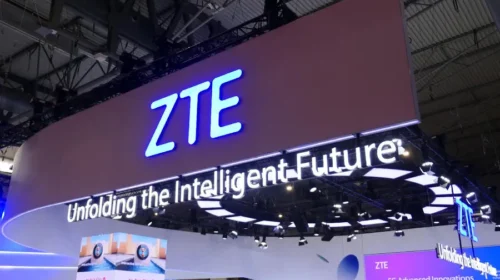Apple’s AI gamble in China: Did it bet on the wrong horse?

Apple may have miscalculated by teaming with Alibaba in a limited AI partnership, rather than embracing open-source sensation DeepSeek
By Vivian Toh
When Apple (AAPL.US) recently unveiled its collaboration with Alibaba (BABA.US; 9988.HK) to enhance AI-driven smartphones in China, it was widely seen as a calculated move to navigate Beijing’s tightening regulatory grip. Yet, in choosing Alibaba, Apple may have overlooked the true game-changer in China’s AI landscape: DeepSeek. This open-source upstart is quietly redefining AI efficiency and ecosystem integration in ways Alibaba cannot. Apple’s reluctance to embrace DeepSeek could prove to be a strategic miscalculation, leaving it vulnerable in a market where technological dominance hinges on localization and flexibility.
Apple’s limited bet on Alibaba
Apple’s AI strategy in China centers on refining Siri’s local-language capabilities and AI-powered photo retrieval, leveraging Alibaba’s cloud infrastructure. This is a logical, if unimaginative, step. It ensures regulatory compliance and provides access to Alibaba’s vast consumer ecosystem, but it barely scratches the surface of China’s rapidly evolving AI demands.
The reality is that China’s AI race is no longer about standalone improvements. It is about ecosystem-driven, low-latency intelligence that seamlessly integrates into everyday digital experiences. ByteDance’s hyper-personalized recommendation engines and Tencent’s (0700.HK) AI-powered WeChat ecosystem exemplify this shift. Apple’s reliance on Alibaba does not position it for this new reality. It remains an outsider in a market where success is increasingly predicated on a deep-rooted, decentralized AI strategy.
DeepSeek’s silent AI revolution
DeepSeek represents a fundamental shift in China’s AI paradigm. Unlike Alibaba’s closed cloud infrastructure, DeepSeek is pioneering a lightweight, energy-efficient, open-source model. This approach is already gaining traction among China’s tech titans. Tencent’s AI-driven WeChat Search, for instance, has reduced response times by 40% using DeepSeek’s architecture, while Meituan (3690.HK) has integrated it into customer service chatbots. Even Alibaba’s enterprise-focused DingTalk is leveraging DeepSeek for workflow automation.
The advantages are clear: DeepSeek’s AI models are tailored for on-device intelligence, reducing cloud dependency while improving speed and energy efficiency — an area where Apple’s own push for on-device AI with Apple Silicon aligns perfectly. Integrating DeepSeek into Apple’s AI playbook could allow it to dramatically reduce cloud infrastructure costs while meeting China’s regulatory demands for localized AI processing.
The AI race in your hand: Chinese giants surge ahead
While Apple plays catch-up, domestic competitors such as Huawei, Honor, and Vivo are aggressively embedding AI directly into their hardware. Huawei’s Mate 60 Pro, powered by its Kunpeng AI chip, offers real-time on-device processing, while Honor’s Magic series emphasizes “zero-latency” AI interactions. These companies understand that AI in China is no longer a luxury — it is a fundamental expectation.
Adding to Apple’s dilemma is the rise of “pseudo-AI” in Chinese Android smartphones, where some vendors market themselves as AI pioneers while relying on pre-set keyword triggers rather than true generative intelligence. This creates an uneven playing field. Apple’s more sophisticated, cloud-reliant AI model is challenged both by genuine innovation and by the widespread perception that cheaper Chinese alternatives offer comparable AI functionality.
Cost of compliance vs. price of innovation
Regulatory constraints remain a core challenge for Apple in China. Beijing’s data localization and AI governance laws require foreign firms to partner with domestic entities, leading Apple to Alibaba. However, Apple must recognize that mere compliance does not equate to market leadership. Chinese AI development is fundamentally different from Silicon Valley’s moonshot-driven model. It thrives on the rapid integration of AI into multifunctional ecosystems rather than discrete technological breakthroughs.
ByteDance’s CapCut exemplifies this shift. The AI-powered video tool blends user-generated content with real-time recommendations, achieving viral adoption within weeks. Apple’s AI efforts — including Vision Pro’s spatial computing — lack this level of deep, system-wide integration. To bridge this gap, Apple must think beyond Alibaba and engage with a broader network of partners, from Tencent’s AI infrastructure to ByteDance’s recommendation algorithms.
Apple needs a reset
Apple’s partnership with Alibaba is a necessary but insufficient step in its China AI strategy. The real battle for AI supremacy in China is being waged through ecosystem-driven intelligence, open-source adaptability, and on-device efficiency. DeepSeek embodies these trends, and Apple’s decision to sidestep it in favor of Alibaba may cost it dearly.
If Apple is to secure its future in China, it must recognize that success in AI is not about securing a single, safe partnership. It is about stitching together a web of alliances that reflect China’s distinct technological ecosystem. In a market where no company can dominate AI alone, Apple must recalibrate — or risk falling behind in the most critical technological race of the decade.
This commentary is the view of the writer and does not necessarily reflect the views of Bamboo Works
Vivian Toh is a Singapore-based journalist who writes about technology and co-founder of Tech Tech China, a technology media startup. You can reach her at techtechchinaeditor@gmail.com.
To subscribe to Bamboo Works free weekly newsletter, click here





